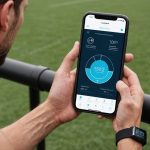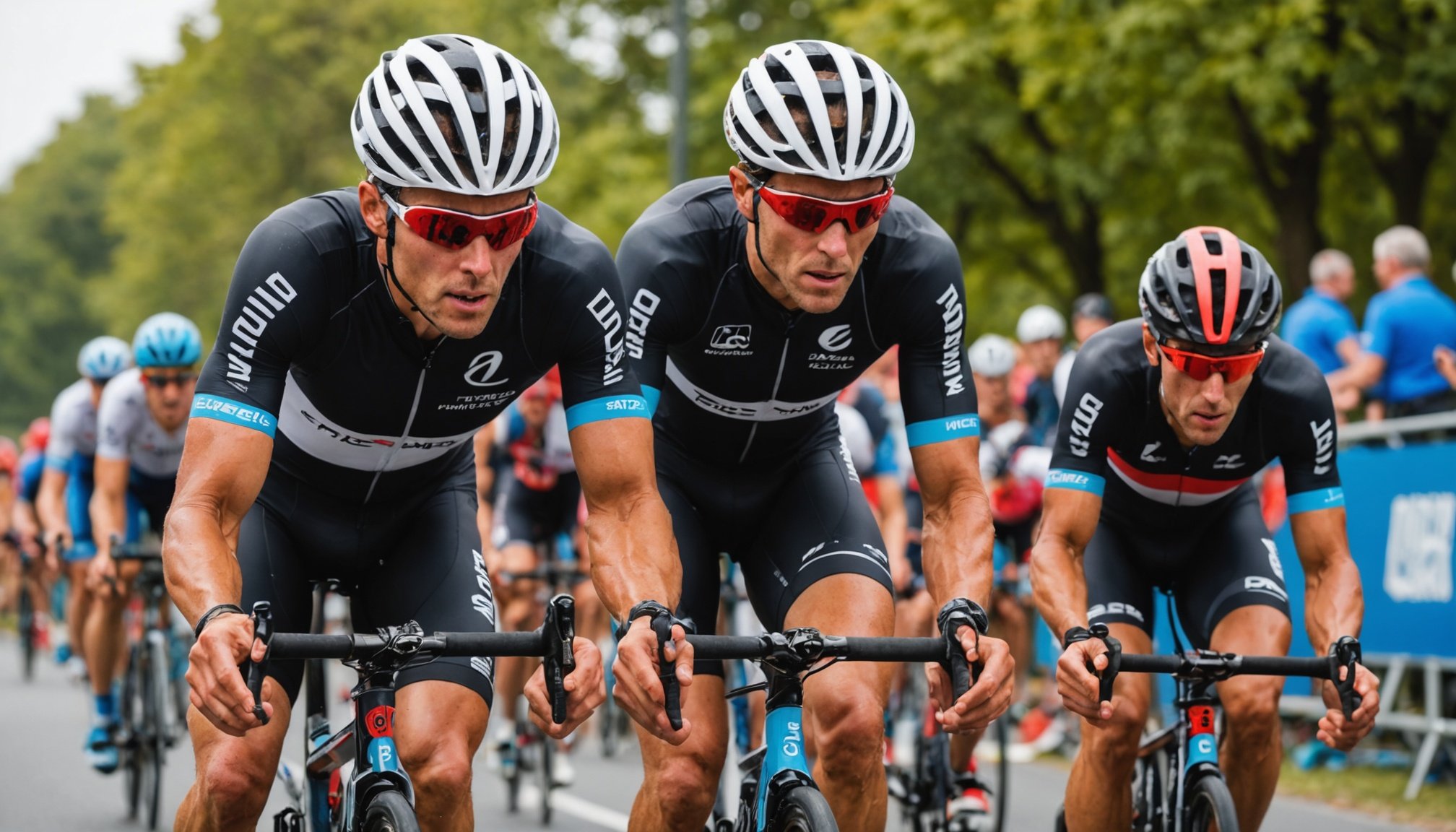Unlocking Faster Transitions: Key Strategies for Triathletes to Accelerate Race Performance
When it comes to triathlon racing, the transition phases can often be the difference between a good performance and a great one. Transitions, or the periods where athletes switch from one discipline to another, are crucial for maintaining momentum and conserving energy. Here’s a comprehensive guide on how to optimize your transitions to enhance your overall race performance.
Understanding the Transition Phases
In a triathlon, there are two primary transition phases: T1 (swim-to-bike) and T2 (bike-to-run). Each of these transitions requires a different set of skills and strategies.
Also read : Transforming athletic excellence: utilizing wearable tech to prevent overtraining in elite athletes
T1: Swim-to-Bike Transition
The T1 transition begins as soon as you exit the water. Here are some key steps to make this transition smooth:
- Remove Swim Gear: Quickly take off your wetsuit, goggles, and swim cap. Practice this in training to get it down to a swift process[3].
- Dry Off: Use a towel to dry your feet, especially if you need to put on socks. This helps prevent blisters and makes putting on your bike shoes easier.
- Put On Bike Gear: Put on your cycling shoes, helmet, and any other necessary gear. Make sure your bike is ready and in the correct gear.
- Walk Your Bike: Walk your bike out of the transition area to the mount/dismount line before getting on.
T2: Bike-to-Run Transition
The T2 transition is just as critical, as it sets you up for the final leg of the race.
Also read : Maximize your game: harnessing the benefits of plyometric push-ups for rugby athletes
- Dismount and Rack Your Bike: Slow down before the dismount line and rack your bike in the same spot where you picked it up. Remove your helmet and cycling shoes.
- Put On Running Gear: Quickly put on your running shoes, grab your race belt with your bib number, and head out for the run[3].
Optimizing Your Transition Area Setup
The way you set up your transition area can significantly impact your transition times.
Transition Mat and Gear Organization
- Use a transition mat or towel to keep all your gear organized. This helps you quickly locate what you need without wasting time searching.
- Lay out your gear in a logical order: bike shoes and helmet on one side, running shoes and energy gels on the other. This setup ensures you can transition quickly and efficiently[3].
Respecting Other Athletes
- Be mindful of other athletes’ spaces. Keep your gear within your designated area to avoid interfering with others.
Mastering Brick Workouts for Seamless Transitions
Brick workouts are a powerful tool for triathletes looking to improve their transitions. These workouts involve combining two disciplines back-to-back, simulating the real race demands.
Why Bricks Matter
- Brick workouts, especially bike-to-run, help your body adapt to the mechanical changes between cycling and running. This reduces the shock and discomfort felt during the actual race[1].
- Sample Brick Workout:
- Bike: 30 minutes in Zone 2, 20 minutes in Zone 3, 10 minutes in Zone 2, and finish with 5 minutes pushing Zone 4 intensity.
- Transition: Aim for under 60 seconds.
- Run: 20 minutes at tempo pace, focusing on relaxed but efficient form[1].
Time-Efficient Training to Enhance Transition Readiness
High-intensity interval training (HIIT) and short, focused workouts can be incredibly effective in preparing you for transitions.
High-Intensity Interval Training (HIIT)
- HIIT involves short, intense bursts of exercise that target both aerobic and anaerobic systems. This type of training enhances stamina across all three disciplines without requiring long training sessions[1].
- Sample HIIT Sets:
- Swim: 5 x 100m sprints with 30–45 seconds rest.
- Cycling: 8-minute intervals at or above Functional Threshold Power (FTP) with 2 minutes of easy spinning to recover.
- Run: 6-minute intervals at a challenging pace (around RPE 7–8), followed by 90 seconds of light jogging or walking[1].
Embracing Short Workouts
- Short workouts, often under 30 minutes, can be surprisingly effective if done with intention. These mini sessions fit easily into busy days, ensuring consistency in your training[1].
- Consistency Is Key: Regular short bouts of focused effort keep your fitness level ticking upward, even when you can’t fit in longer sessions.
Nutrition Strategies for Optimal Transition Performance
Nutrition plays a critical role in maintaining energy levels throughout the race, especially during transitions.
Pre-Race Nutrition
- Breakfast: Stick to carbohydrates, a little protein, and minimal fats. Finish breakfast 2-3 hours before the race to allow for digestion[2].
- Pre-Race Hydration: Sip water and/or a carbohydrate electrolyte drink in the 2 hours leading up to the race.
During the Race
- Bike Leg: Start with water and minimal calories for the first 5-10 minutes. Then, follow your trained nutrition plan, consuming 200-350 carbohydrate calories per hour. Drink 1 to 1.5 liters of fluid per hour, combining water and carbohydrate electrolyte drinks[2].
- Run Leg: Wait 5-10 minutes into the run before starting your nutrition/hydration regime. Calorie consumption should be 15-30% lower per hour than on the bike. Liquid calories, such as from carbohydrate electrolyte drinks or cola, are often easier to digest during the run[2].
Practical Tips for Faster Transitions
Here are some practical tips to help you streamline your transitions:
Transition Drills
- Practice T1 and T2 transitions at home or during training sessions. Even five minutes of quick transition drills can build efficiency[1].
Familiarize Yourself with the Transition Area
- Know the layout of the transition area before the race. This helps you move quickly and smoothly through the process[3].
Use Visual Cues
- Use visual cues like brightly colored towels or markers to quickly locate your transition spot.
Table: Comparison of Key Transition Strategies
| Strategy | Description | Benefits |
|---|---|---|
| Brick Workouts | Combine two disciplines back-to-back (e.g., bike-to-run) | Reduces mechanical shock, enhances transition readiness |
| HIIT Training | Short, intense bursts of exercise targeting aerobic and anaerobic systems | Enhances stamina, reduces training time |
| Short Workouts | Focused training sessions under 30 minutes | Maintains fitness consistency, fits into busy schedules |
| Pre-Race Nutrition | Balanced breakfast, hydration 2 hours before the race | Ensures proper digestion, maintains energy levels |
| In-Race Nutrition | Follow trained nutrition plan, consume calories and fluids regularly | Maintains energy, avoids dehydration and GI distress |
| Transition Drills | Practice T1 and T2 transitions regularly | Builds efficiency, reduces transition time |
| Transition Area Familiarization | Know the layout before the race | Reduces confusion, speeds up transitions |
Quotes from Experts
- “Brick workouts are the epitome of time-efficient triathlon training—getting two sports done in one go,” says an expert from Efficient Endurance[1].
- “Nutrition for a 70.3 deserves as much thought and planning as the rest of your physical training. You should develop a plan and practice it repeatedly in training to ensure you finish the bike leg with energy left and set yourself up for a great run,” advises Lance Watson, LifeSport head coach[2].
Optimizing your transitions in a triathlon is not just about saving a few seconds; it’s about maintaining momentum, conserving energy, and ensuring you perform at your best. By incorporating brick workouts, high-intensity interval training, and short focused workouts into your training, you can significantly improve your transition readiness. Additionally, a well-planned nutrition strategy and familiarity with the transition area can make all the difference on race day.
Remember, every little bit counts in triathlon racing. By mastering your transitions, you can gain a competitive edge and achieve a really good performance. So, take the time to practice, plan, and perfect your transitions—it will be worth it when you cross that finish line.











